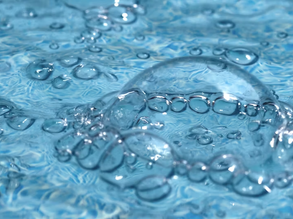Aquatic therapy is a form of rehabilitation that involves exercises performed in a pool or other body of water. It is a low-impact form of physical therapy that can be beneficial for people with a variety of conditions, including arthritis, back pain, balance disorders, and post-surgery care. The buoyancy of the water helps to reduce the impact on joints, while the resistance of the water provides a gentle form of resistance training.
If you’re interested in finding aquatic therapy near you, there are many options available. Many physical therapy clinics offer aquatic therapy as one of their services, and there are also specialized aquatic therapy centers that focus solely on this type of therapy. Some hospitals and rehabilitation centers also offer aquatic therapy as part of their rehabilitation programs.
When looking for aquatic therapy near you, it’s important to find a licensed aquatic physical therapist who has experience working with patients with your specific condition. They can help you develop a personalized treatment plan that is tailored to your individual needs and goals. With the right therapist and a commitment to your therapy program, aquatic therapy can be a highly effective form of rehabilitation that can help you improve your strength, flexibility, and overall quality of life.
Table of Contents
ToggleUnderstanding Aquatic Therapy
Aquatic therapy, also known as hydrotherapy, is a type of rehabilitation that takes place in a pool or other aquatic environment. This type of therapy is often used to help individuals recover from injuries or illnesses that affect their mobility and strength. It is also used to help manage chronic conditions such as arthritis, fibromyalgia, and multiple sclerosis.
Benefits of Water-Based Rehabilitation
One of the key benefits of aquatic therapy is the buoyancy of water. This property allows individuals to move more easily and with less pain than they would be able to on land. Water also provides resistance, which can help to build strength and endurance. Additionally, the warmth of the water can help to relax muscles and promote circulation.
Aquatic therapy can be particularly useful for individuals who have difficulty with balance. The water provides a stable environment that can help to reduce the risk of falls. It can also be beneficial for individuals who have limited flexibility, as the buoyancy of the water can help to support the body and allow for greater range of motion.
Aquatic Therapy vs. Land-Based Therapy
While both aquatic therapy and land-based therapy can be effective forms of rehabilitation, there are some key differences between the two. One of the main advantages of aquatic therapy is the reduced impact on joints and bones. This can be particularly beneficial for individuals who have conditions such as arthritis or osteoporosis.
On the other hand, land-based therapy may be more effective for building strength and endurance. It can also be more effective for individuals who need to work on balance and coordination, as the ground provides a stable surface for these activities.
Overall, aquatic therapy can be a highly effective form of rehabilitation for a wide variety of conditions. It provides a low-impact environment that can help to reduce pain and improve mobility and strength.
Conditions Treated with Aquatic Therapy
Aquatic therapy is a form of physical therapy that utilizes the buoyancy and resistance of water to promote healing and improve physical function. This type of therapy is particularly beneficial for individuals with conditions that limit their ability to perform land-based exercises, such as those with musculoskeletal disorders, neurological conditions, and chronic pain.
Musculoskeletal Disorders
Aquatic therapy can provide relief and promote healing for individuals with conditions such as arthritis, back pain, and facet dysfunction. Water’s buoyancy reduces the stress on joints and muscles, allowing for gentle movements and improved range of motion. Additionally, the resistance of the water provides a low-impact workout that can help build strength and endurance.
Neurological Conditions
Aquatic therapy can also benefit individuals with neurological conditions such as multiple sclerosis and stroke. The buoyancy of the water can help support weak muscles and improve balance, while the resistance of the water can help build strength and endurance. Aquatic therapy can also provide a safe and supportive environment for individuals with neurological conditions to work on their physical function and mobility.
Chronic Pain Management
Aquatic therapy can be an effective form of chronic pain management for individuals with conditions such as fibromyalgia and muscular dystrophy. The warmth of the water can help relax muscles and reduce pain, while the buoyancy of the water can reduce the impact of weight-bearing exercises. Aquatic therapy can also provide a low-impact workout that can help build strength and endurance without exacerbating chronic pain.
Overall, aquatic therapy is a safe and effective form of physical therapy that can benefit individuals with a wide range of conditions. Whether you are looking to improve your physical function, manage chronic pain, or simply enjoy a low-impact workout, aquatic therapy may be a great option for you.
Aquatic Therapy Techniques and Exercises
Aquatic therapy, also known as hydrotherapy, is a form of therapeutic exercise performed in a pool or other aquatic environment. This type of therapy can be beneficial for individuals who have difficulty performing traditional exercises due to pain, muscle spasm, or limited range of motion. In this section, we will discuss some of the most common aquatic therapy techniques and exercises.
Hydrotherapy and Warm Water Exercises
Hydrotherapy is a form of aquatic therapy that uses warm water to promote relaxation and healing. Warm water can help to reduce muscle tension and spasm, which can lead to improved range of motion and movement. Some common hydrotherapy exercises include:
- Floating: This exercise involves lying on your back and allowing your body to float in the water. This can be a relaxing exercise that can help to reduce stress and tension in the body.
- Walking: Walking in the water can be a low-impact exercise that can help to improve cardiovascular fitness and strength. The buoyancy of the water can help to reduce stress on the joints and muscles.
- Water Aerobics: Water aerobics involves performing a variety of exercises in the water, such as jumping jacks, lunges, and squats. This can be a fun and effective way to improve strength and conditioning.
Strength and Conditioning Workouts
Aquatic therapy can also be used to improve strength and conditioning. Some common strength and conditioning exercises include:
- Resistance Training: Resistance training involves using equipment such as water dumbbells or resistance bands to perform exercises that target specific muscle groups.
- Treadmill: A treadmill can be used in the water to provide a low-impact form of cardiovascular exercise. This can be a great way to improve endurance and fitness.
- Deep Water Running: Deep water running involves wearing a flotation device and running in the deep end of the pool. This can be a challenging exercise that can help to improve cardiovascular fitness and strength.
Overall, aquatic therapy can be a beneficial form of exercise for individuals who have difficulty performing traditional exercises. By using the buoyancy and resistance of water, individuals can improve their strength, flexibility, and cardiovascular fitness while reducing stress on the joints and muscles.
Finding Aquatic Therapy Services
Aquatic therapy is a specialized form of physical therapy that takes place in a pool. It can be an effective way to relieve pain, improve mobility, and increase strength. If you’re interested in finding aquatic therapy services near you, there are a few things to keep in mind.
Choosing the Right Facility
When looking for aquatic therapy services, it’s important to choose a facility that has a pool and licensed physical therapists who are trained in aquatic therapy. You can start by searching online for facilities near you that offer this service.
Once you have a list of potential facilities, consider factors such as location, cost, and the experience of the clinicians. It’s also important to make sure the facility is clean and well-maintained, and that the pool is heated to a comfortable temperature.
What to Expect in a Therapy Session
During an aquatic therapy session, you’ll work with a licensed physical therapist who will evaluate your needs and develop a personalized treatment plan. The therapist will guide you through exercises and movements in the pool, using the water’s buoyancy to reduce stress on your joints and muscles.
Sessions typically last around 30-60 minutes and may include a combination of exercises such as stretching, strengthening, and cardiovascular activities. The therapist will monitor your progress and adjust your treatment plan as needed.
In conclusion, finding aquatic therapy services near you requires some research and consideration. By choosing the right facility and working with a licensed physical therapist, you can experience the benefits of this specialized form of physical therapy.
Aquatic Therapy for Post-Surgical Rehabilitation
Aquatic therapy is a form of physical therapy that utilizes the physical properties of water to aid in the rehabilitation and recovery process. It is an effective and safe way to help patients recover from various surgical procedures, including joint replacement surgery and sports-related injuries.
Joint Replacement and Recovery
Aquatic therapy is particularly beneficial for patients who have undergone joint replacement surgery. The buoyancy of water reduces the amount of weight-bearing on the joints, which can help alleviate pain and discomfort. Additionally, the resistance provided by the water can help patients gradually improve their range of motion and strength.
According to a study published in the Journal of Aquatic Physical Therapy, aquatic therapy has been found to be effective in improving functional mobility and reducing pain in patients following total knee replacement surgery. The study also found that patients who participated in aquatic therapy had a higher level of satisfaction with their rehabilitation process compared to those who did not participate in aquatic therapy.
Sports Injury Rehabilitation
Aquatic therapy can also be an effective rehabilitation tool for athletes recovering from sports-related injuries. The buoyancy of water can help reduce the impact and stress on joints and muscles, allowing athletes to engage in low-impact exercises that can help improve their mobility and strength.
A study published in the International Journal of Sports Physical Therapy found that aquatic therapy was effective in improving lower extremity strength and functional performance in athletes recovering from anterior cruciate ligament (ACL) injuries. The study also found that aquatic therapy was a safe and effective way to help athletes return to their sport following injury.
In conclusion, aquatic therapy is a safe and effective way to aid in the post-surgical rehabilitation process for joint replacement surgery and sports-related injuries. It can help improve functional mobility, reduce pain, and improve strength. Patients who participate in aquatic therapy have reported a higher level of satisfaction with their rehabilitation process.



